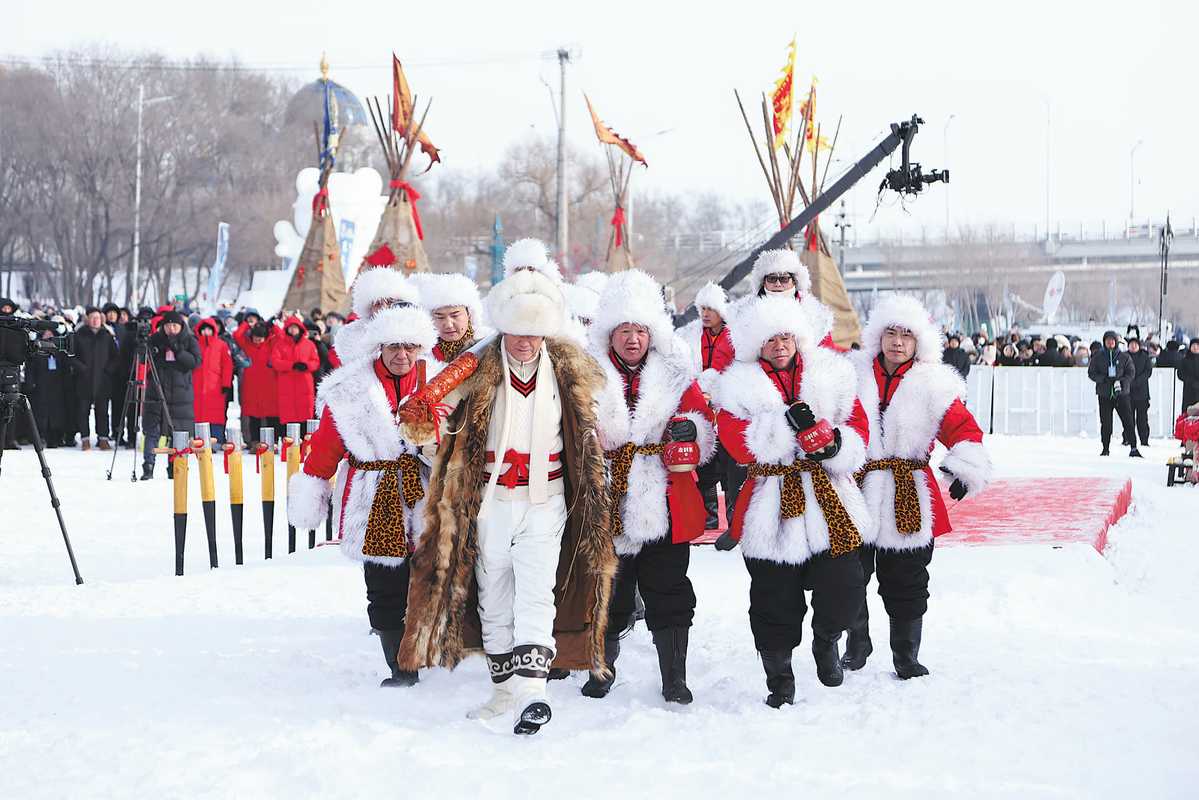
The ice-cutting festival in Harbin, Heilongjiang province attracts visitors from home and abroad. PROVIDED TO CHINA DAILY
In the presence of a biting wind, fur-clad workers wielded steel chisels to tackle the frozen surface of the Songhua River, producing a large crystalline slab of ice to the cheers of spectators in Harbin, Northeast China's Heilongjiang province.
The ice block, dubbed the "first ice" of the year, was harvested amid the rhythmic chants of workers, signaling the start of Harbin's annual ice-cutting season on the Songhua River, which winds through the city.
This winter, the iconic ice-cutting festival in Harbin started on Dec 7, and is one of China's most popular ice-and-snow tourism destinations, attracting thousands of tourists from home and abroad.
Every year, in early December, when the temperature drops low enough, the annual ice harvest on the Songhua River begins — a spectacle eagerly anticipated by locals and tourists, alike.
"From the kickoff ceremony onward, we spend 20 to 30 days every winter harvesting ice from the frozen river. The colder it gets, the busier we are," said Wang Zhan, a veteran of the trade.
"During peak times, nearly a thousand ice collectors may work together, harvesting up to 10,000 cubic meters of ice daily," Wang added.
Wang explained that ice blocks must be harvested from river sections with both stable water flow and quality to ensure uniform density and clarity.
Once the site is chosen, he and his co-workers wait for the ice layer to reach a thickness of at least 30 centimeters before beginning the process.
"We start by marking the designated area and carving out the shape of the blocks using mallets and chisels," Wang said.
"Once that's done, we switch to chain saws to cut the ice into blocks measuring 160 centimeters long and 80 centimeters wide, which are then lifted from the river to be transported."
With more than a decade of ice-cutting experience under his belt, Wang has grown accustomed to the chorus of clattering chisels and buzzing chain saws.
He expressed joy at seeing the ice-collecting tradition, along with local customs and delicacies, reaching a wider audience through this event.
Artists carve the blocks into fanciful sculptures, transforming the city into a winter wonderland.
The traditional ceremony attracted thousands of residents and tourists who braved the extreme cold and strong wind on the frozen river.